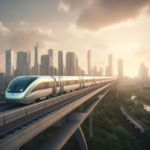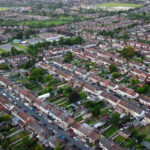Industry Insights: Building Design
Outline
Introduction
Building design encompasses the planning and creation of a structure's aesthetics, functionality, and sustainability. It integrates architectural, engineering, and environmental considerations to produce spaces that are not only visually appealing but also efficient and adaptable to future needs.
Key Considerations
Effective building design involves several key considerations:
- Functionality: Ensuring that the design meets the intended use and needs of its occupants.
- Aesthetics: Creating a visually pleasing design that complements its surroundings and meets aesthetic goals.
- Sustainability: Incorporating sustainable practices to minimize environmental impact and enhance energy efficiency.
- Accessibility: Designing spaces that are accessible and inclusive for all users, including those with disabilities.
- Safety: Implementing design features that ensure the safety and well-being of occupants.
Design Methodologies
Various methodologies are employed in building design:
- Architectural Design: Focuses on the aesthetic and functional aspects of a building, including layout, materials, and form.
- Structural Design: Ensures that the building's structure is safe, stable, and capable of supporting loads.
- MEP Design: Integrates mechanical, electrical, and plumbing systems into the building's design for efficient operation.
- Sustainable Design: Incorporates green building practices to enhance energy efficiency, reduce waste, and promote environmental stewardship.
- Adaptive Reuse: Adapts existing structures for new purposes, preserving historical value while meeting contemporary needs.
Benefits
Well-executed building design offers numerous benefits:
- Enhanced User Experience: Provides spaces that are functional, comfortable, and aligned with user needs.
- Increased Property Value: High-quality design can significantly increase the value of a property.
- Energy Efficiency: Sustainable design practices lead to reduced energy consumption and lower operational costs.
- Compliance: Ensures that the building meets all regulatory and code requirements.
- Longevity: Promotes the durability and long-term performance of the building.
Challenges
Building design can face several challenges:
- Budget Constraints: Balancing design aspirations with financial limitations.
- Regulatory Compliance: Navigating complex building codes and regulations.
- Client Expectations: Aligning design with client preferences and expectations while maintaining feasibility.
- Technological Integration: Incorporating advanced technologies without compromising design integrity.
- Environmental Impact: Addressing the environmental footprint of construction and operation.
Future Trends
Future trends in building design may involve:
- Smart Buildings: Integrating advanced technology for automated systems and enhanced user experience.
- Biophilic Design: Incorporating natural elements to improve occupant well-being and connection with nature.
- Energy-Positive Buildings: Designing structures that produce more energy than they consume.
- Modular Construction: Utilizing modular techniques for faster, more cost-effective building processes.
Conclusion
Building design is a complex and multifaceted field that combines aesthetics, functionality, and sustainability. By addressing key considerations, employing effective methodologies, and staying abreast of future trends, designers can create buildings that are both innovative and enduring.
Frequently Asked Questions
Building design is the process of creating plans and specifications for a building’s structure and appearance. It involves architectural, structural, and systems design to ensure the building is functional, aesthetically pleasing, and sustainable.
Main components include architectural design, structural design, MEP (mechanical, electrical, plumbing) design, and sustainable design.
Sustainable design improves energy efficiency, reduces environmental impact, and can lower operational costs while enhancing the building’s overall performance and longevity.
Challenges include budget constraints, regulatory compliance, balancing client expectations, integrating technology, and managing environmental impacts.
Get in Touch
If you have any questions or need more information about our building design services, feel free to contact us. Our team is ready to assist with your building design needs.













